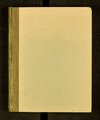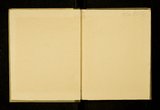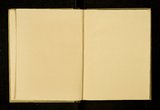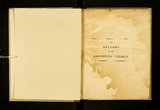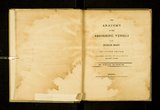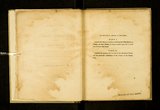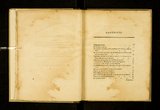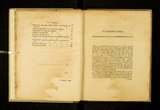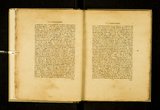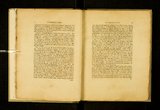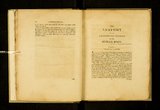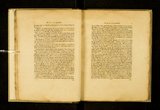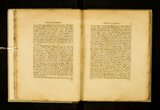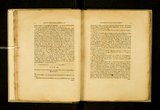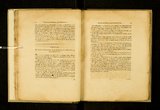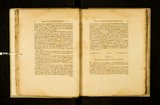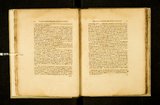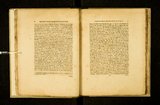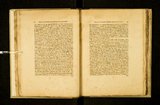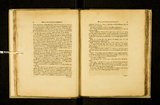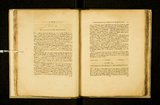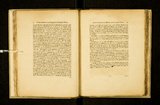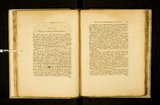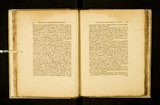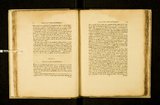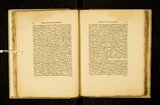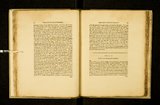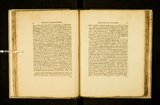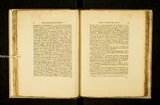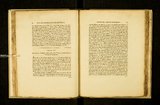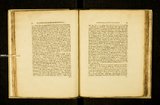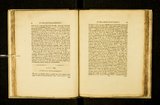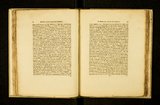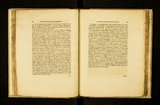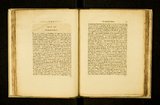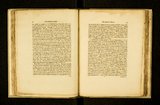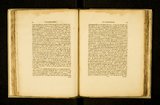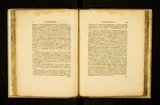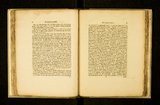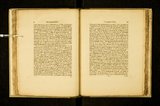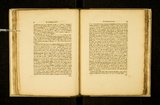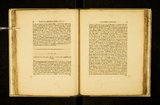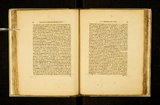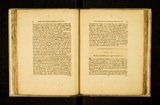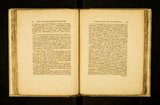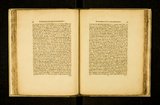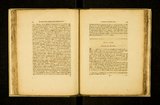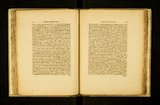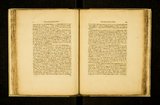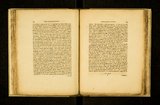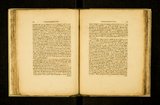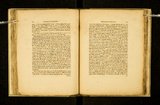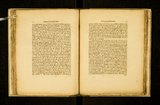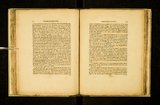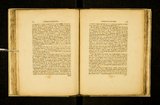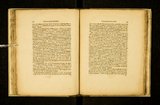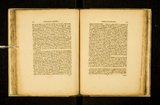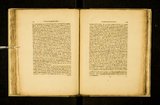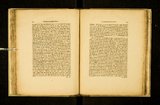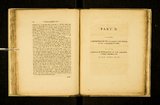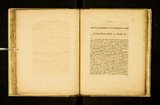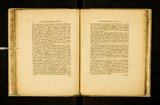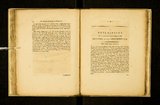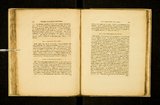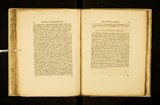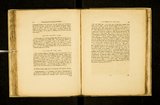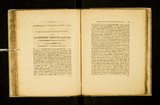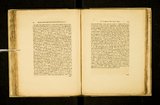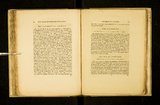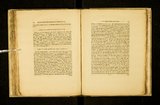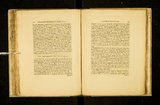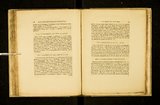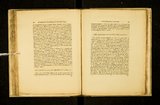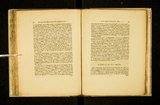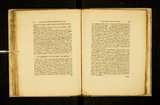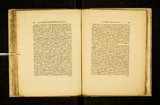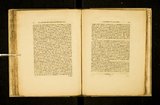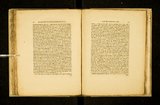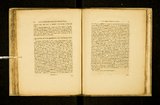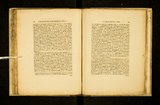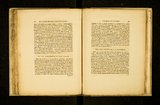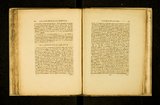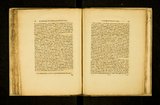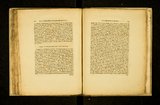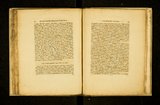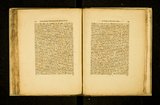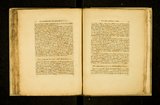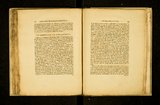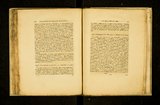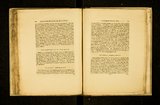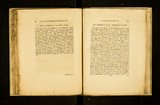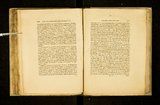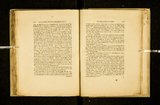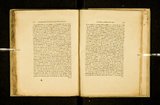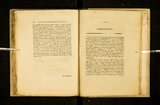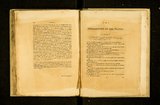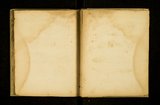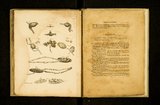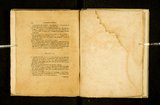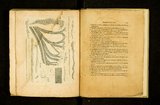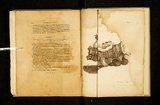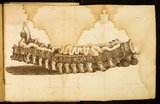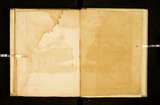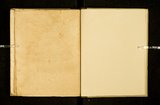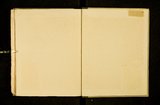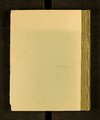| OCR Text |
Show 56 Orifices (y' tbz Lrtctwlr and Lymp/mtics. m If the Laelcnls and Lymp/m/z'cs. seen,* and, as‘I have already Now, as these orifices have never been ion from their number, so I confus and ness minute in lost observed, are als antl lymphatics. W hat oflacte orifices almost despaircd ofever seeing the these vessels sometimes take up made me think it at all possible, was, that distinctly seen in the micro- very are which blood, the of es particl red the us diluting powcrtthc oriprevio any t withou and eously, scope, spontan It more visible. fices, therefore, through which they enter must be still seeing them, occurred to me, that the place where there was a possibility of tion takes plaCe was likely to be the villi of the intestines; a greater absorp hang , on that surface, the vessels are in proportion larger; besides they or the pile of out from the surface in distinct packets, and resemble hairs, s and the ar- velvet, from whence they have been termed villi. The lacteal s are collapsed lacteal the and body, dead the in ly empty general are teries the and invisible, even in the living body, when there, is no eliyle or lymph in intestines. The state of the villi must then be difierent from that in the living and absorbing intestine. Of course, they must be liable to distention and col- In order, therefore, to see the orifices of the lacteals, it naturally oc- lapse. curred to me that the villi must be in the distended state. time to propel their contents after the death of the system, and are also gene- state of distention, and proper for microscopical examination. That acci- in consequence of convulsions after lying-in, about five in the morning. She had been in perfect health the preceding evening, and eat heartily at supper. The lactcals were distended with chyle, which here formed a firm eoagulum : many of the villi were turgid with the same chyle, and resembled white vesicles, This was, at that time, an appearance new tome. I have since found, how- ever, that other auatomists had seen the same thing: Bohlius, the last of the pupils of Ruvseh, and a friend of IIaller's, published, in 1741, a trea- tise, entitled, Vite [atrium (Ur/taro brand/1i, lush/rm via/11min, \Verner and I ditl not then know that Drr Nivliolls, in his Disquixilio (ht mnlti (units, &c. had delineated the exhalants as seen in the microscope on the villi of the stomach of an or; his word: explaining the figure, are, " (1116' nrlcriw, t'tisa secrete} ill tlemilltnli's," Eve. l‘it'llt‘ r a" . ‘31‘3.J'mywr r "any " villi albi,--omnisque intestini interna superficies albidis [)mwtis con- spersa." Haller, after mentioning those who prior to him had seen the villi loaded with chyle, says, " Et ego inque hominc villos albicantes et chylo plenos vidi." It was on these, that, for the first time I saw the absorbent orifices of the lacteals: but, before I describe them, I shall endeavour to pointout what other anatomists have asserted on this subject. Asellius seems tohave seen something of the same appearance of villi in quadrupeds; for, speaking of the lacteals, and their orifices, he says, " Ad intestina instar hirudinum ltiant spongiosis capitulis." His account of their orifices, from his own words, appears to be imaginary,- and accordingly has been considered as such by succeeding anatomists, who, assisted by their best microscopes, could not find these orifices.-Hallcr, speaking of the absorbing orifices of the lactcals, concludes, " Particula de qua Ruyschius desperaverat ct Lysterus et ipse demum microscopiae artis magister A. V. Lcwenhoeck."-Ruysch‘s words are, " Vena: autem laCtEZf: primi generis rally empty, it must be a matter of uncommon accident to find them in the A woman died, sit,"-and that in his experiments where ligatures had been made on the trunks ofthc lacteals in living animals, some hours after they had been fed, The arteries are always empty in the dead body ; and as the lactcals continue only for a little dent, however, actually happened. 57 Feller say of him,---" prima ora, conspcxit ct globulos lacteos ex iis expres- ‘ "" oriuntur ex intestinis tam subtili principio ut inefl‘abile id, et incredibile sit, ita quidem ut tomcntosa horum cxilitas absolute non possit ulla figura de- pingi."-«Lciberl{uhn has been considered by some as the discoverer of the orifices of the lactcals. Having described the arteries and veins of the vil- lus, he comes to its lacteal, which, he says, arises out of an oval vesicle, having a little hole in its extremity. " Ramusculus vasis lactei extenditur in ampullulam vel vesiculam ovulo haud absimilem, in cujus apice foram- mulum quoddam cxiguum microscopic dctegitur." Sometimes he disco- vered more than one perforation in the ampullula: " Quod autem unum saltem adsit forammulum in cujusvis ampullula: apice, certo examine mihi constat: interdum tamen licet rarissime plura, ut in papilis mammarum, vi- disse memini." This ampullula he describes as filled with cellular memhrane, or forming a spongy cavity. He says it has an artery and a vein opening into its cavity, and that it absorbs the chyle, and gives it to the ltieteal. I'lis account of the opening ofthe artery and vein into the ampul- lula, I have already noticed; the spongy cavity he thus describes: " Inllcs I per |


